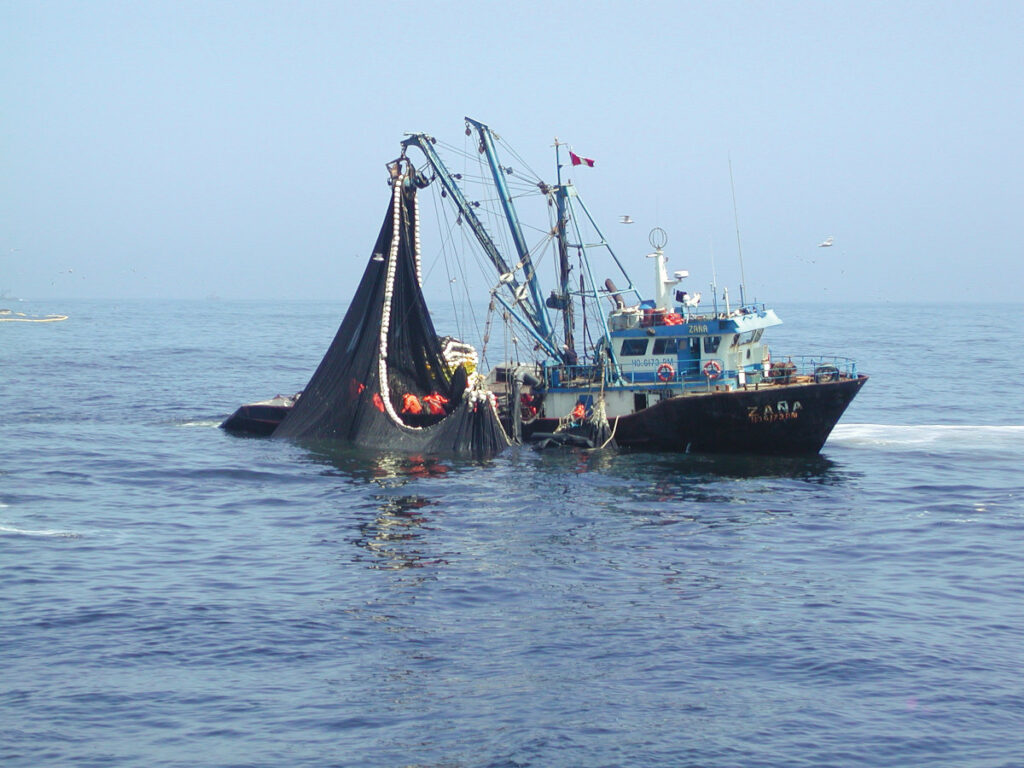[LUM#18] Back to the future of marine ecosystems
By studying the ocean fauna of the last interglacial period off the coast of Peru, scientists understand that the ecosystem dominated today by anchovies could in future become a goby paradise. Results that overturn ocean model projections.

How will marine species adapt to climate change? This question is all the more crucial for ecologists as the ocean environment is particularly affected by global warming. In addition to rising water temperatures, the oceans are facing changes in ocean currents, acidification of the water and a drop in oxygen content. A study published in Science in January 2022, in which the Marbec* laboratory took part, provides an unprecedented forecast for the transformation of the ecosystem off the coast of Peru by the end of the century.
Thanks to the Humboldt Current, the Peruvian coast is a prolific oceanic zone, with upwellings of cold water bringing quantities of nutrients from the depths. But this profusion of life makes it all the more fragile. Rich in organic matter, the zone is low in oxygen due to the intense activity of bacteria. It is even anoxic (oxygen-free) from a few dozen meters below the surface. While some species are trapped on the surface, others have adapted by rising to the surface at night to oxygenate themselves. But if the concentration of oxygen in the water falls further as a result of rising water temperatures, some species may not be able to adapt. "Scientists have long thought that oxygen was not a key factor in the evolution of the marine environment. But in some areas, such as off the coast of Peru, it is the limiting factor," explains Arnaud Bertrand, co-author of the study and a marine ecologist at the Marbec laboratory.
130,000 years of marine history
The question for researchers is therefore to anticipate how, under the effect of rising temperatures and falling oxygen, the ecosystem might evolve. Overall, scientists expect fish to shrink in size. "For cold-blooded animals, metabolism increases with temperature. Warmer, oxygen-poor conditions therefore favor smaller individuals, which require proportionately less energy and oxygen, since the volume of fish decreases on average faster than their size," explains Arnaud Bertrand. But two hypotheses remain possible: either species will shrink, or new, smaller species will establish themselves.
In the southeast Pacific, the second hypothesis is the correct one, according to original results published in Science. Researchers predict that the current ecosystem, characterized by abundant anchovies, could shift to a new goby-dominated state by the end of the century. To convince themselves of this, they studied marine evolution on a geological timescale. Under the leadership of paleobiologist Renato Salvatteci, the international team was able to reconstruct 130,000 years of ocean life using a 5-meter core of the ocean floor. Scales, vertebrae... have enabled us to learn about the diversity of species and their abundance over the millennia.
The researchers found that the ecosystem underwent a radical transformation, depending on changes in environmental conditions (temperature and oxygen concentration in particular). During the last interglacial period, 125,000 years ago, temperatures and concentrations in Peru were those predicted for the end of our century. At that time, the ecosystem was dominated not by anchovies, but by small gobies. In all likelihood, the changeover that took place then could happen again. "This is a very important discovery. None of the current models is capable of predicting that a small fish that is currently negligible in the ecosystem can become dominant," insists Arnaud Bertrand.
For this research, the scientists benefited from a remarkable environment: it is rare to be able to carry out paleobiology in a marine environment, which generally does not offer the necessary conservation conditions. But the anoxic environment of the Peruvian coast helped preserve the organic matter in the sediments. " This core has opened a window on the abiotic conditions expected at the end of the century," says the researcher.
A less productive and less diverse ecosystem
The success of gobies can be explained by their small size (a few centimetres, compared with ten or so for anchovies) and their greater resistance to anoxic conditions. Less nutritious and less fatty than anchovies, their predominance will modify the entire food chain, right down to the birds and marine mammals, explains Arnaud Bertrand: "the population of current species could therefore collapse in favor of new species, probably towards a less productive and less diverse ecosystem".
For the scientific community, these results are invaluable. " It's very difficult to test our hypotheses on the evolution of fish populations with recent observations, because we can't know what is due to global warming and what is due to fishing", explains Arnaud Bertrand. Fishing contributes to reducing the size of species by removing the largest specimens; it can also lead to a shift towards smaller fish communities. In Namibia, for example, overfishing of sardines in the 1970s led to a shift in the ecosystem towards gobies and jellyfish (Reporterre 16/03/2013). " This isolated case, which we took to be a special case, could well be valid for large, productive ecosystems", stresses the scientist.
*Marbec (UM, IRD, CNRS, Ifremer)
UM podcasts are now available on your favorite platforms (Spotify, Deezer, Apple podcasts, Amazon Music...).